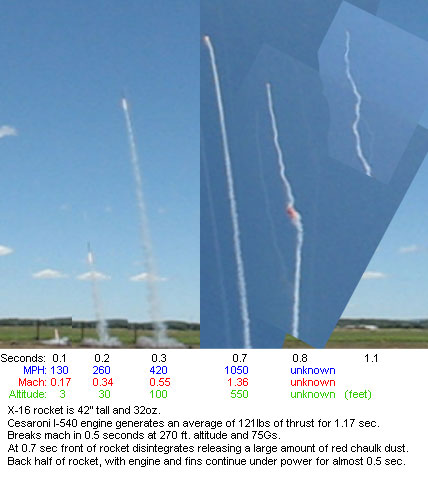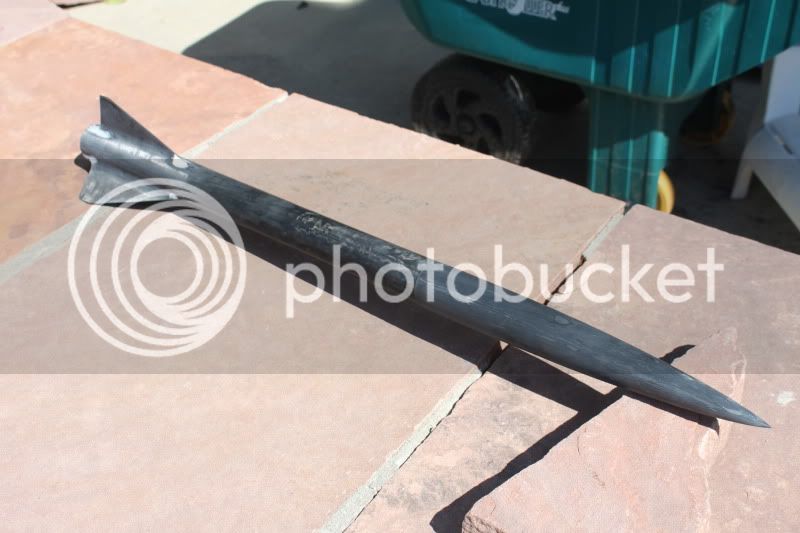Viperfixr
Born Again Rocketeer
- Joined
- Jan 19, 2009
- Messages
- 1,474
- Reaction score
- 73
I would really like to scratch build a 38mm minimum diameter rocket that will be able to break 10k AGL and Mach 1 on an AT J570, or even higher & faster on the new 38/1320 motor AT just released (perhaps at LDRS 29??). I've scratch built some, but I am not a rocket design expert. First design questions:
Now, a couple component choice questions. It would be easy to buy carbon fiber tubes and be done with it. Like most of you, I am trying to maximize the bank for the $$$ buck. If I can still smash 10k/M1 on a J570 and have a solid/dependable rocket, that would be my choice (not trying to set records). Using Rocksim, it seems about 41oz empty weight seems to be the J570 optimum mass--yields over 11k altitude. However, making that light weight in a dual deploy rocket is tougher in design that I thought after playing in RS. What do you all think about these choices?
Many of you have tons of experience here, and I am all ears--please give your $0.02 or more. In the end I know this is my decision, and I am likely to get as many opinions as responses, but I value your thoughts. This project excites me, and seems like a great bang for the reload $$$'s rocket--can't wait to build it.
Attached is my draft project--thank you for your time and inputs.
View attachment HiAlt38.rkt
- Is there a fin area rule? How do you know how large (or small) to make the fins? Rocksim stability shows the attached design green, but I am wondering how far I could shrink the fins to save drag.
Now, a couple component choice questions. It would be easy to buy carbon fiber tubes and be done with it. Like most of you, I am trying to maximize the bank for the $$$ buck. If I can still smash 10k/M1 on a J570 and have a solid/dependable rocket, that would be my choice (not trying to set records). Using Rocksim, it seems about 41oz empty weight seems to be the J570 optimum mass--yields over 11k altitude. However, making that light weight in a dual deploy rocket is tougher in design that I thought after playing in RS. What do you all think about these choices?
- Body Tube Choice: needs to take up to 100G's and Mach flight. A) CF/Kevlar + FG sleeves over phenolic, B) Hawk Mt/GLR FG tubes, C) ARR Blue Tube 2.0 (with or without CF/Kevlar sleeve). ARR makes a 38mm ebay, which seems like a nice match.
- Fins: custom or self-cut seems to be the only way to get the shape I like--similar to a PR Mongoose. A) Hawk Mountain/PML/GLR G10 customs (not bad $$$ wise), B) cut my own from CF laminate (big $$$'s)
- Motor retention, I am debating between safety wire through a hole in the back of two fins through the aft closure ring, or a GLR slimline (which doesn't work for a snap ring motor and has a drag/weight penalty).
- Recovery harness, I am planning on a plugged & tapped AT forward closure with an eye bolt on the top side.
Many of you have tons of experience here, and I am all ears--please give your $0.02 or more. In the end I know this is my decision, and I am likely to get as many opinions as responses, but I value your thoughts. This project excites me, and seems like a great bang for the reload $$$'s rocket--can't wait to build it.
Attached is my draft project--thank you for your time and inputs.
View attachment HiAlt38.rkt










